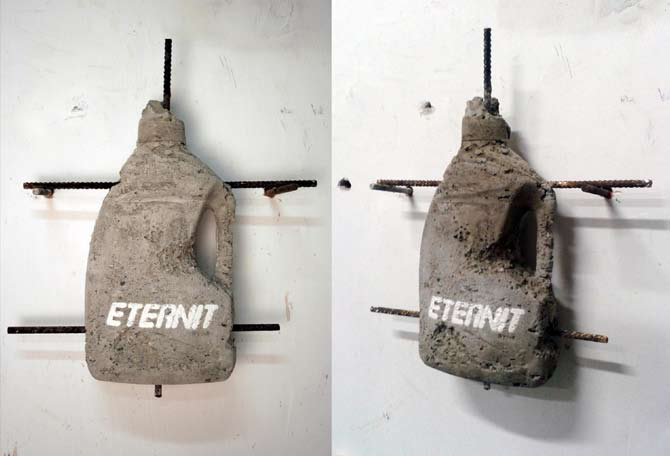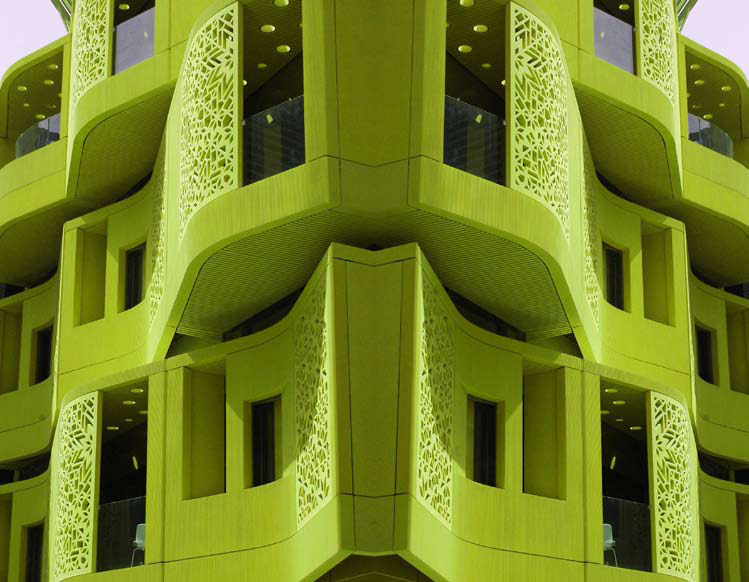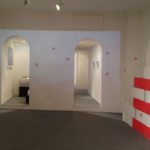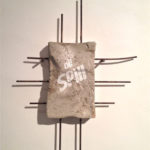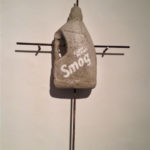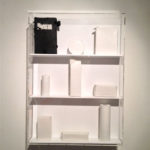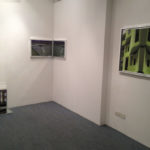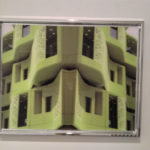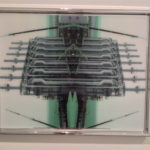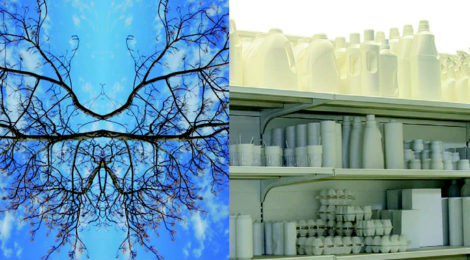
Hazel / Ballestra – JOURNEY INTO REALITY
by Alberto Mattia Martini and Paola Valenti
from 23 January to 23 February 2013
Space Testoni Artefiera 2013: PAD. 26 STAND B60
Opening of the exhibition in the gallery
Wednesday 23 January 2013 from 20,30 all 22.30
Friday 25 from 16,00 all 22,30
Saturday 26 from 10,30 all 24,00 on the occasion of ART CITY WHITE NIGHT
Sunday 27 and Monday 28 from 10,30 all 20,00
The Gallery SPACE TESTONI Bologna presents Art Fair 2013 from 25 to the 28 January 2013, Pavilion 26 – Stand B60, the project "JOURNEY INTO REALITY”, an exhibition of new works of artists Andrea Francolino and Maria Rebecca Ballestra and at its headquarters in Via D'Azeglio 50 a double solo of the same artists by Alberto Mattia Martini and Paola Valenti, with opening Wednesday 23 January 2013 at 20,30, exhibition that is part of the circuit ART CITY Bologna 2013 e ART CITY White Night di sabato 26 January 2013 and will remain visible until Saturday 23 February 2013.
The presentation for the first time along with the works of these two artists, both within Art Fair, that in the gallery during the week dedicated to contemporary art Bologna, allow visitors to learn about the latest artistic interpretations of Maria Rebecca Ballestra and Andrea Francolino, that both derive from the reality in which we live the inspiration for their creativity and expressiveness, now widely known also internationally.
The gallery space Testoni has invited the respective editors of reference of the two artists, Paola Valenti Mary Rebecca Ballestra and Alberto Mattia Martini Andrea Francolino, to present to the public their works during the 2012 and in January 2013, that are part of these events.
Andrea Francolino
The packaging as a symbol and icon of consumerism immediately and inevitably brings to mind the work of Andrea Hazel; his is a thorough search, a meticulous, at times exhausting which acts by means of the complaint, using various weapons such as: advertising, the commercial product and in some circumstances even irony. Awareness net and determined, which led Francolino to move towards further and if we are even more sensitive and conceptually in-depth analysis in communion with the essential. The current investigation, refined but also more direct, critical raw, addresses a topic, that does not take into account only the Western man in his habitat, but in this case the individual is firmly bound to a confrontation with his fellow, one who lives in the so-called Third World.
Andrea Francolino used a supermarket shelf about six feet, on which he installed and ready commercial products recovered from the garbage, thus putting in relation the size and thus the weight of the garbage that a person belonging to a country “developed” produces in a month, with the amount of products that uses a man in the world “underdeveloped” at the same time. If you wanted to represent the weight of the garbage that produces in a year a person living in the most industrialized, it would take twelve shelves like this. The data and report evidence of a clear and chilling inequality: over 700 Packaging consumati, equal to 44,944 Minimum of garbage generated by an inhabitant of the world “developed”, against 5 packaging consumed by a person who lives in the Third World. The report, hear-hear is: 1/150! This figure is alarming and clearly gives rise to a number of considerations, ranging from the evident difference of economic power commercial and then the resulting imbalance of wealth among the most powerful countries and poor, overuse, disproportionate and reckless that we act on a daily basis, in most cases much higher than our real needs and therefore useless, and finally, but no less dramatic, the amount and harmfulness of the waste and the consequent problem of the disposal of the same, generated by man developed and therefore in theory more intelligent. The white becomes for Andrea Francolino the non-color, a kind of property denied, purity that takes the fatal semblance of greed and ruthless; selfishness and individualism, so well that identifies the developed world of today, focused only on himself and increasingly apathetic aseptically and colorless. The silent vision of the, as the same Francolino, to which the user is prompted, is highlighted by the white, the deliberate lack of brand products and the rough human evil, included also in the works carried out by means of rough concrete. The packaging here remain the
protagonists, but instead of the brand is “sealed” on each of them the term that outlines and carries out the polluting elements and consequently toxic and harmful, that the same man “healing occurs so”. The packaging becomes concrete, as the bread becomes flesh and bodies such as crucifixes, Products cemented take them to the essence of being harmful, that put on the cross redeems himself and hopefully, has the ability to save the next. The concrete is also the backbone of the crucial work that reproduces a map of one of the largest malls in the world. The Mall of America, also called MOA, is located in the United States and is the most visited shopping mall in the world, with forty million visitors each year. A place, or rather a “not place” immense, that Andrea Hazel chose as an emblem of that society often pleasantly attracted and charmed by superfluous, ephemeral and tries in vain to postpone the day of reckoning. Time, however, by definition, has no mercy, passes inexorably changing, ruining and then altering the primitive features. The mall becomes synonymous with an area where there alienation, Standardization, Arctic and impersonal as a cement, cracked by the lack of real emotions, that seems to take the form of a labyrinth within which the individual identity is lost or a sort of Rosetta stone of the third millennium, essential for the deciphering of contemporary.
Alberto Mattia Martini
Maria Rebecca Ballestra
The fragility of our planet – theme to which Maria Rebecca Ballestra has spent intense project, ongoing, Journey into Fragility (www.journeyintofragility.com) – is the crucial problem that all humanity will face in the future now so close as to be perceived by many as already.
The various stages of work in progress created by itinerant Ballestra inspired by the Charter of Arenzano of Earth and Man, designed and created by the Ligurian poet Maximum Morasso, bear witness to the concerns, contradictions but also solutions with which, in different parts of the world, people from different cultures deal, more or less consciously, the emergence of the increasingly precarious balance between nature and man. From the need to try to resolve, at least in part, this problem have taken their visionary power realities like that of modern Arab city of Masdar City (Abu Dhabi), Rebecca Ballestra which has dedicated a Charmful photographic work, traits futuristic, during the fourth stage of his long journey: also known as the Garden City, Masdar City is a model of sustainable city, designed to offer a high standard of living and optimal working conditions with the least possible environmental impact and ecological. Masdar City is the real answer, provided by Abu Dhabi – leading company in the global economy for the production of hydrocarbons – some of the most pressing problems of humanity: energy security, climate change and the development of human skills in relation to sustainability.
The urgency of the environmental situation requires, in fact, accountability on the part not only of great political and economic realities, but also of every individual who is able to understand the importance of their contribution and to gain the awareness of being part of a system based on reciprocity and , of choices, actions. Just thinking about this problem, the artist has created – during the fifth stage of the journey around the world that led to China, and the accuracy in Sunhoo Industrial Design Innovation Park in Fuyang, in the province of Hangzhou – l’installazione I’m because you are: is suggestive to interpret, also on the basis of Taoist philosophy, the statement that gives the title to the work - I exist because you exist – as a warning to the personification of Nature Man, universally understood, to remind him of the condition of interdependence that binds not only to other living beings but also, and especially, the natural world, with the whole system self-generating elements, in turn changing and interaction, that needs to be listened, understood and respected.
The brick wall that overlooks the installation is an explicit reference to the dramatic development that is affecting Fuyang, with the consequent transformation of entire agricultural land in industrial zones and residential. Although the city represents, at national level, a model for the protection of the environment, the impact of these changes on the landscape, dominated by the presence of mountains and rivers, is proving to be massive and radical, making dramatic contrast between the value attributed to the nature of the cultural and philosophical traditions of China and the push for economic growth that is transforming the country. To accentuate the contrast between old and new values, Rebecca Ballestra has some painted red brick wall, thus forming the trigram K'un (Earth), one of the eight trigrams handed down from I Ching, document among the oldest in the world, dating in writing about 3000 years ago: the trigram K'un symbolizes a mother figure, to reiterate that it is the nature that lies the principle of life.
On the wall and on the floor around it are dozens of colorful dragonflies, while a video projection see images of dragonflies in flight: are the symbol of illusion and change, and, significantly, live thousands in Fuyang, city in which we live today the illusion of change with respect for nature and its needs. How bold and risky both seem to want to witness this Promethean challenge, with their sovereign presence, the giant animals, in a possible future posthuman era, could rule unchallenged buildings constructed, in the past, by equally ambitious men.
Paola Valenti






















